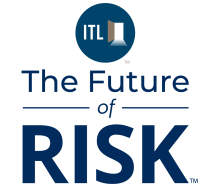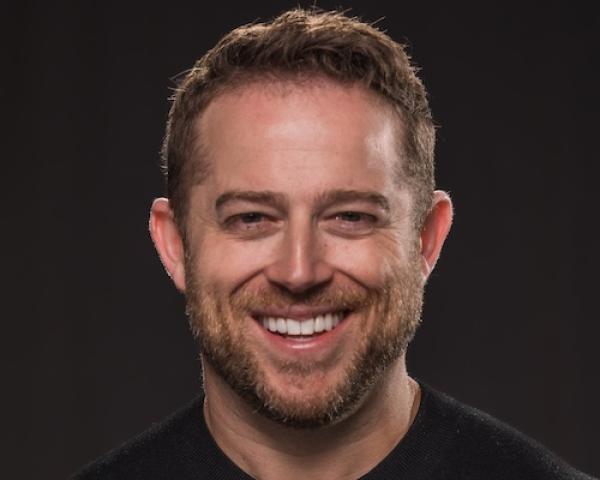The threat of a hurricane or an earthquake is enough to make anyone tremble. Fear around these catastrophes reverberates far beyond the insurance world, where they have been officially dubbed "primary perils."
Hurricanes and earthquakes earned this "primary" distinction because, for the longest time, they posed the greatest risk to carrier solvency. There was so much concern around hurricanes and earthquakes that the science of catastrophe risk modeling began with the desire to understand and quantify their risks.
In thinking we were tackling the "primary problems," so much of the industry has overlooked the cumulative, material impact of "secondary perils." Secondary events like wildfires and severe convective storms have gained momentum in our blind spots and now pose equal threat to insurance operations.
It all raises the question: Is this "primary/secondary" distinction still relevant, or perhaps even dangerous, in today's environment?
Removing this distinction, both in concept and in practice, will give insurers more solid footing to overcome the insurance crisis.
The insurance community must eradicate the outdated peril hierarchy not only internally, but also for property owners, who may not realize their inherent peril bias as they make decisions around how to protect the places they call home.
Tear away the tiers
In terms of destruction, "secondary perils" have, since the mid- to late 2010s, usurped hurricanes and earthquakes.
In 2023, hail and tornadoes stemming from severe convective storms caused more insured losses than any hurricane during the 2023 season. Floods are also among the deadliest, most destructive perils.
In 2025 to date, wildfires (not yet technically considered a "primary peril") have outdone all natural catastrophes, with the Los Angeles blazes alone causing up to $45 billion in insured losses.
Clearly, there's nothing "secondary" about hail, tornadoes, floods, or wildfires.
Here's how we get all perils, and everyone, on the same page to protect insurers everywhere in their ability to reinforce communities:
Build an arsenal of resources to evaluate all perils
To nurture a realistic view of risk in today's environment, carriers need a full stack of resources to address every peril — including advanced catastrophe risk models for "secondary perils" that align with real-life scenarios. It's no longer enough to prioritize the biggest catastrophes; an effective risk management strategy involves looking at the potential magnitude of every kind of weather event.
Given that the nature of storms and other disasters changes each year and season, companies can protect their ability to succeed with sophisticated, high-fidelity, probabilistic risk models that simulate hundreds of thousands of years of potential events.
Working with risk modeling solution providers that regularly recalibrate their systems to adapt to a constantly changing environment is an investment that will deliver. When evaluating high-frequency events like severe convective storms, insurers need digital tools that reflect real-time conditions.
Understand when natural perils are amplified by the unnatural
It's not just about leveraging a full spectrum of risk models; it is also imperative to grasp why certain perils are posing increasingly significant threats to the insurance system. Understanding the nuances is how we get to the heart of risk that would otherwise be hard to quantify.
All perils are changing, and it's not always due to an unpredictable environment. We can no longer afford to ignore the myriad of components that are fueling emerging perils (literally).
One of the reasons why wildfires have led to more significant losses, and have thus become harder to insure against, is that they are increasingly becoming conflagrations. While wildfires are typically blazes that start in the wildlands and are largely fueled by natural vegetation, wildfire-induced conflagrations occur when these fires reach the built environment. When fed by man-made building materials, wildfire-induced conflagrations can burn down communities in just hours. This is what happened to the Pacific Palisades and Altadena neighborhoods during the monumental Los Angeles wildfires earlier this year.
The growing fallout from severe convective storms also has a human dimension. Since the global pandemic lifted the need for many workers to be physically present in corporate offices, large numbers of people have moved to storm-prone states in Tornado Alley, including Texas. As the built environment has become denser, the potential for insured losses has increased. This played into the impacts of the 2024 season, when Texas experienced unprecedented damage.
With all tll this in mind, digital tools can enhance your risk management strategy by distinguishing man-made risks from traditional hazard risks.
Educate your consumers
Issuing policies doesn't have to be purely transactional; it can be educational, too.
To fully support their policyholders and build resilience in a world that seems to play peril roulette, carriers can educate consumers about the far-reaching impact of all weather events — both perils that can cause incredible damage in one fell swoop and the high-frequency events that cause compounded destruction.
Keeping prospects and policyholders informed about their options for adequate coverage builds invaluable risk literacy. This type of outreach doesn't have to be complicated, either; simple marketing campaigns or a slight reframing to embrace informative customer service will go a long way.
Many property owners are underinsured, particularly for floods, which can lead to significant out-of-pocket costs. By sharing insights gleaned from models and internal experts and encouraging policyholders to review their coverage on an annual basis, carriers can empower their policyholders to make more informed insurance decisions.
Severe convective storms are now affecting more areas, and with greater intensity, so it's crucial to educate more property owners about these perils and their new paths of destruction.
Risk literacy can also help protect more people from the impacts of wildfires. Those living distant from the wilderness-urban interface (WUI) may not realize they still could face significant burn potential from conflagrations.
Risk savviness drives more mitigation, which is key to building resilience within communities. When homeowners fortify their homes against the disasters most likely to strike them, they limit the impact even the worst catastrophes can have—not just on their own property but across their neighborhoods. Mitigation is contagious, too, helping insurers broaden their risk appetite in communities that may need protection the most.
Dive deeper; don't drown in risk
Weather events that once seemed immaterial have now become significant perils in their own right. With the insurance crisis in full swing, it's time to bring disasters like hail events, tornadoes, windstorms, floods, wildfires, and other emerging catastrophes into sharper focus.
We don't have to take blows from this crisis lying down. Instead, let's reinforce our risk management and underwriting functions with a full arsenal of risk modeling solutions. From there, we can amplify the resilience of communities everywhere.






